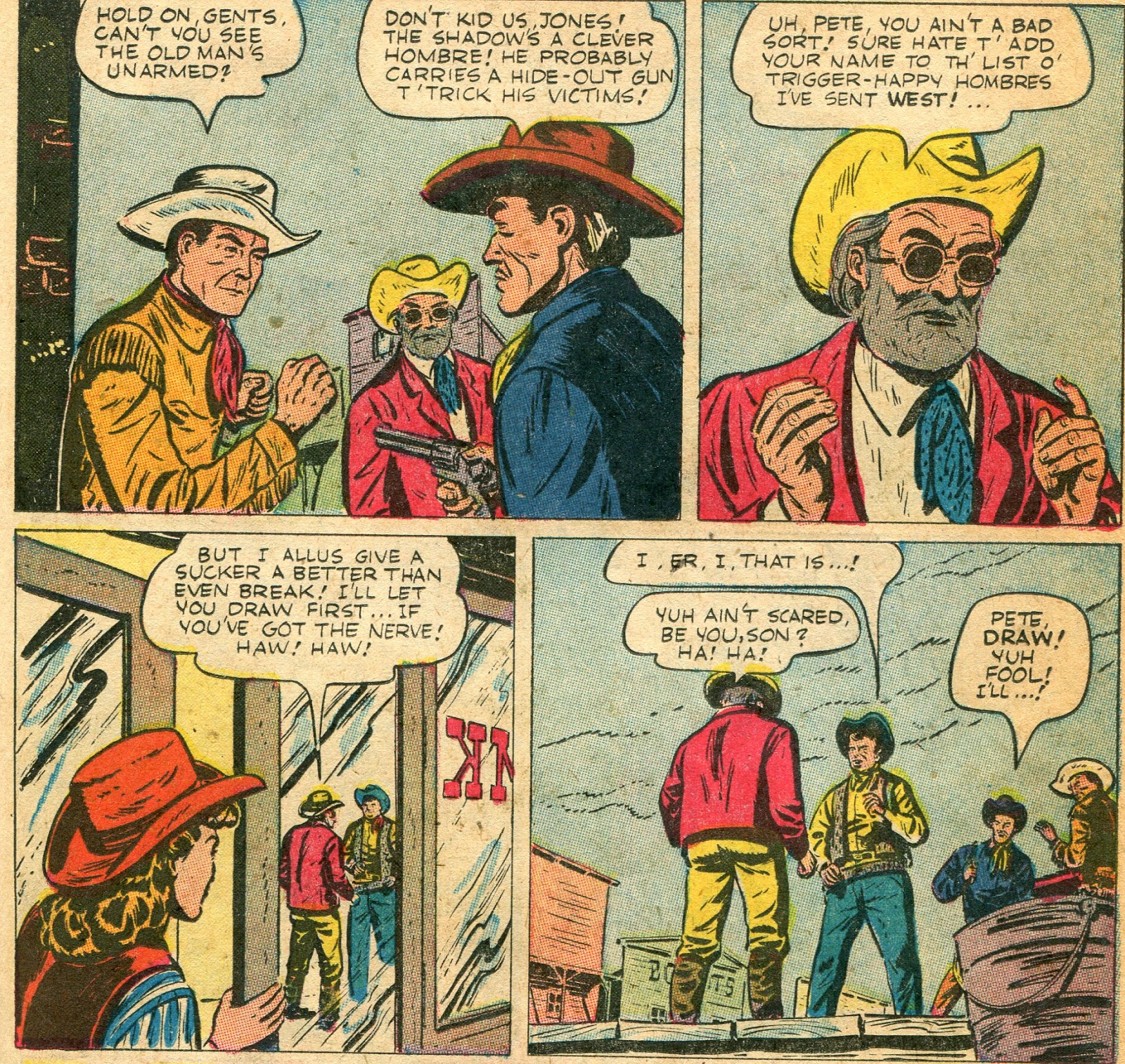 But there are occasions when an entire movie is planned around stock footage, with story construction driven entirely by whichever images were already captured for someone else's movie. One example of this is 1950's Two Lost Worlds, the first starring role for James Arness. It's an awkward and often dull pirate story, with a dinosaur-inhabited lost world clumsily stuck at the end, using footage from One Million BC (1940) to show us the prehistoric monsters. It's a particularly disappointing effort, since one would naturally suppose that combining pirates and dinosaurs would be inherently awesome.
But there are occasions when an entire movie is planned around stock footage, with story construction driven entirely by whichever images were already captured for someone else's movie. One example of this is 1950's Two Lost Worlds, the first starring role for James Arness. It's an awkward and often dull pirate story, with a dinosaur-inhabited lost world clumsily stuck at the end, using footage from One Million BC (1940) to show us the prehistoric monsters. It's a particularly disappointing effort, since one would naturally suppose that combining pirates and dinosaurs would be inherently awesome.In 1961, Columbia Pictures and director Edward Bernds did a much better job constructing a story around stock footage. They actually started with Jules Verne's 1877 novel Off on a Comet (sometimes titled Career of a Comet), in which a comet strikes the Earth a glancing blow and carries off a chunk of our planet inhabited by 36 people.
The movie takes the basic premise, the name of one character and reduces the number of characters taking the unexpected comet ride to two. It then tosses a more-or-less original story into the mix, driven by the stock footage that was available.
.jpg)
The result is surprisingly entertaining. The movie uses footage mostly from One Million BC, but also from Rodan and Cat-Women of the Moon. It also borrows Morlock costumes from The Time Machine--Morlocks look creepy in black-and-white. But it manages to smoothly integrate all these images into a coherent plot.

The protagonists are French soldier Hector Servadac and Irish soldier-of-fortune Michael Denning. The two are about to try to kill each other in a duel when the comet hits.
They are forced to team up fighting Neanderthals and giant spiders before eventually figuring out what's going on. When a rampaging mammoth forces them to separate, each finds a home with a different Stone Age tribe. Each finds a girlfriend (both of whom are very pretty and surprisingly advanced in the ways of skin care and hair styling). The tribes are enemies, though, so it's up to the two new arrivals to convince them to make peace, which ironically involves a battle against a giant lizard/dinosaur and the "invention" of gunpowder.

The protagonists are played by veteran character actors Cesare Danova and Sean McClory, who play the potentially silly material completely straight and give it all credibility. The story works very well--the various plot twists must have been planned around the stock footage, but this is done intelligently and with an obvious respect for the requirements of good storytelling. Heck, it even carries through a coherent theme through the movie--two men who were planning on killing each other end up working together to bring peace between the two tribes. Valley of the Dragons may have borrowed images from at least four previously told stories, but it tells its own story well.

















































